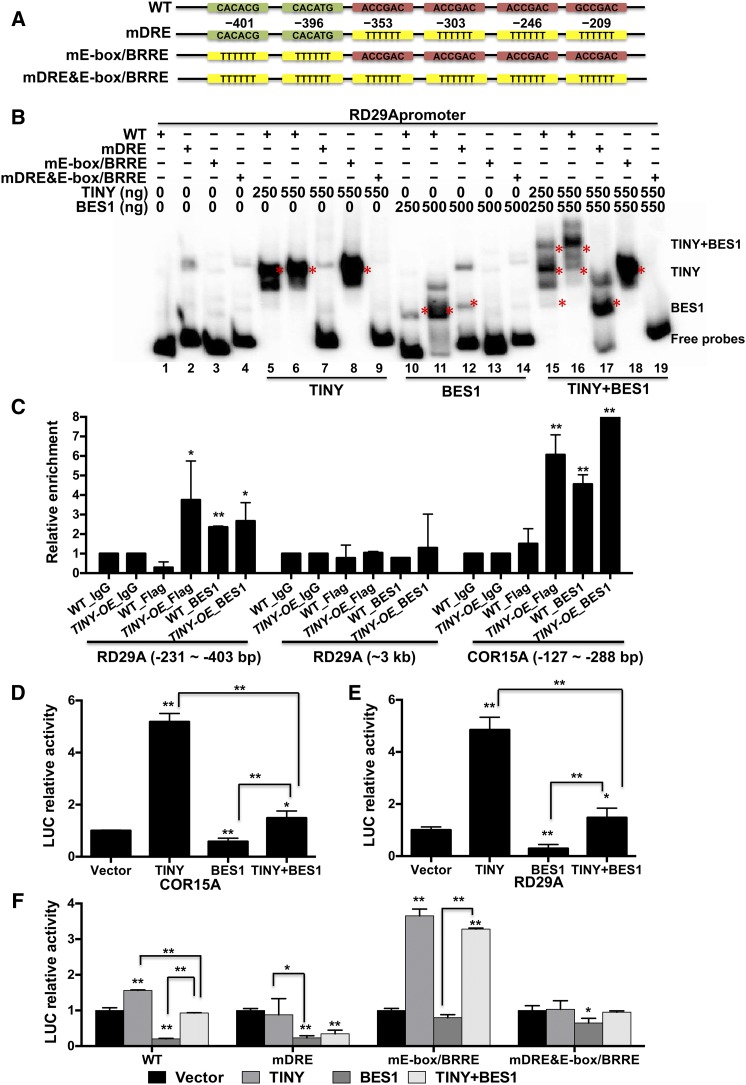Figure 6.
TINY and BES1 Had Reciprocal Inhibition on Drought-Responsive Genes.
(A) Schematic diagram of the promoter region of RD29A. Wild type (WT) with DRE (in red) and E-box/BRRE (in green) were indicated. mDRE&mE-box/BRRE, the mutation of DRE, E-box, and BRRE elements.
(B) TINY and BES1 bind to RD29A promoter as revealed by EMSA. The DNA sequences that contained the wild-type (WT) or mutated forms from (A) were used as probes for DNA binding assay. WT or mutated probes were labeled with [γ-32P]ATP, and the indicated amount (ng) of proteins were used for reaction. Asterisks show the corresponding bands indicated on the right.
(C) TINY and BES1 enriched on RD29A and COR15A promoter in ChIP assay. The wild-type (WT) and TINY-OE plants were used to prepare chromatin and ChIP with antibodies against FLAG, BES1, or IgG as control. The ChIP products were used to detect promoters containing DRE, E-box, and BRRE and about upstream 3 kb of the transcriptional start site of RD29A as control. Data represent mean and sd from three biological replicates (n = 3). Each biological replicate was pooled tissue from three to four individual plants. *P < 0.05, **P < 0.01; Student’s t test.
(D) to (F) Transient LUC reporter assays with indicated promoter:LUC reporters were performed in N. benthamiana leaves with TINY and/or BES1 effector. LUC relative activities were normalized with total protein and control. Data represent mean and sd from three to five biological replicates (n = 3 to 5). Each biological replicate was comprised of five 7-mm leaf discs from one leaf. *P < 0.05, **P < 0.01; Student’s t test. WT, wild type.

